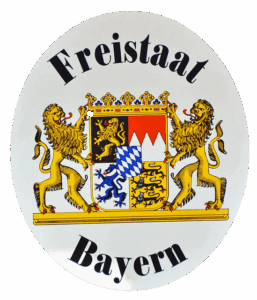Karachi’s Energy Mix: Comparing Fuel Types and Their Market Implications
Karachi, Pakistan's economic powerhouse, experiences a complex energy transition driven by indu…….

Karachi, Pakistan's economic powerhouse, experiences a complex energy transition driven by industrialization, population growth, and transportation demands. The city currently relies on fossil fuels like natural gas and petroleum, with discussions around diversification due to supply challenges and environmental concerns. Renewable integration, particularly solar and wind power, is gaining traction to decrease the carbon footprint and bolster energy security. Price volatility, infrastructure issues, and safety concerns impact consumer choices, while global oil markets and domestic tax policies drive fluctuations in fuel rates. Karachi's dynamic market reflects an evolving preference for affordable and sustainable options, emphasizing the importance of renewable energy integration and efficient resource management.
In Karachi, a vibrant metropolis teeming with energy, the fuel market is a complex tapestry woven with diverse threads. This article delves into the city’s energy landscape, exploring the predominant fuel sources and their advantages and drawbacks. We analyze the intricate market dynamics, including price fluctuations, supply-demand equilibrium, and influencing factors shaping fuel choices. Furthermore, environmental considerations and sustainability prospects for various fuel types in Karachi are brought to light, offering a comprehensive overview of the city’s energy narrative.
- Karachi's Energy Landscape: An Overview of Current Fuel Sources
- Advantages and Disadvantages of Common Fuel Types in the Region
- Market Dynamics: Prices, Supply, and Demand Factors Shaping Fuel Choices
- Environmental Impact and Sustainability Considerations for Different Fuels
Karachi's Energy Landscape: An Overview of Current Fuel Sources

Karachi, Pakistan’s economic powerhouse and a bustling metropolis, has witnessed a significant evolution in its energy landscape over the years. The city’s energy needs are diverse and complex, driven by its rapid industrialization, increasing population, and evolving transportation sectors. Currently, Karachi’s fuel sources are a mix of traditional and renewable options.
The primary fuel types in Karachi include fossil fuels like natural gas and petroleum products, which dominate the power generation and transportation sectors. Natural gas, in particular, has gained prominence due to its relatively cleaner burning properties compared to coal or heavy fuel oil. However, recent challenges in gas supply and distribution have prompted discussions about diversifying energy sources. Moreover, there’s a growing emphasis on renewable energy integration, with initiatives focused on solar and wind power generation, aiming to reduce the city’s carbon footprint and enhance energy security.
Advantages and Disadvantages of Common Fuel Types in the Region

In Karachi, the primary fuel types include petroleum products such as petrol and diesel, alongside growing adoption of natural gas for domestic and industrial use. Petroleum-based fuels like petrol and diesel offer significant advantages in terms of accessibility and high energy density, making them convenient for various transport applications. However, these fuels contribute to air pollution and have associated environmental impacts, including greenhouse gas emissions that exacerbate climate change. Additionally, price volatility can significantly affect consumer costs, as seen in Karachi’s dynamic market.
Natural gas, an alternative fuel, presents a cleaner option with lower carbon emissions compared to petrol and diesel. It is increasingly popular for cooking and heating in urban areas like Karachi due to its relative affordability and lower environmental impact. Nevertheless, infrastructure challenges such as pipeline maintenance and network expansion can limit natural gas’s immediate availability and accessibility. Moreover, safety concerns regarding leaks and explosions must be adequately addressed to ensure public trust and widespread adoption.
Market Dynamics: Prices, Supply, and Demand Factors Shaping Fuel Choices

In the dynamic market of Karachi, fuel choices are heavily influenced by intricate interplay of prices, supply, and demand. The city’s energy landscape is characterized by fluctuating gasoline and diesel rates, driven by global oil markets and domestic tax policies. Supply disruptions due to geopolitical tensions or logistical constraints can quickly translate into price hikes, prompting consumers and businesses alike to optimize their fuel usage and seek alternatives.
Demand patterns in Karachi are similarly complex, with factors like population growth, vehicle ownership, and industrial activity driving up the need for fossil fuels. During peak travel seasons or economic booms, demand surges, pushing prices higher and incentivizing efficient transportation solutions. Conversely, during economic downturns or periods of environmental awareness, there’s a shift towards more affordable and sustainable fuel options, reflecting the city’s evolving energy preferences and market dynamics.
Environmental Impact and Sustainability Considerations for Different Fuels

In the dynamic energy landscape of Karachi, the choice of fuel has significant implications for the city’s environmental health and sustainability. Fossil fuels, long the dominant option, contribute substantially to air pollution and climate change. The burning of coal, oil, and natural gas releases greenhouse gases like carbon dioxide, exacerbating global warming. Moreover, these fuels lead to local air quality issues, affecting the well-being of Karachi’s residents.
Renewable alternatives, such as solar, wind, and biomass power, offer a greener path forward. These sources significantly reduce carbon footprints and minimize air pollution. The integration of renewable energy in Karachi’s fuel mix could contribute to the city’s resilience against climate change while fostering local economic development. Sustainable practices, including efficient use and recycling, further enhance the environmental benefits, making them crucial considerations in the current market dynamics.
In the vibrant yet complex energy landscape of Karachi, understanding the advantages, disadvantages, and market dynamics of various fuel types is crucial. This article has explored the diverse fuel sources in the region, their environmental impacts, and sustainability considerations. As Karachi navigates its energy future, adopting a balanced approach that prioritizes both economic viability and ecological responsibility will be key. By evaluating these factors, the city can make informed choices to ensure a sustainable and resilient energy mix for its growing population.







